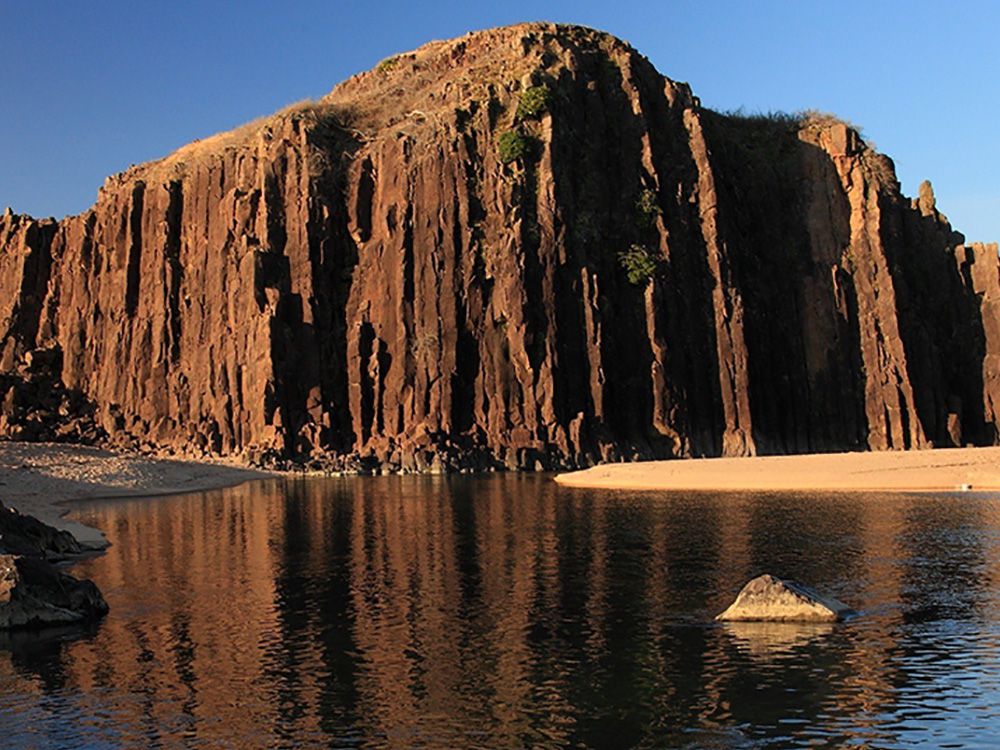BEACHES & OUTDOORS
Excursions & Geoparks
-
Ikari Kogen Highlands
Covering approximately 88 hectares of grassy plains, the Ikari Kogen highlands serve as grazing grounds for cows, goats, and sheep. In the highlands, you'll find a Steak House, offering views of the vast grassland and where you can enjoy locally sourced steak and hamburgers. From this elevated…
-
Tateiwa (Standing Rock)
Tateiwa rock represents the Tango area in the San’in Kaigan Geopark. It is a huge monolith with a height of 20 meters. This boulder is made up of hardened magma that emerged from a geological stratum, including volcanic dust which accumulated over 15 million years ago. Since rocks which emerged from…
-
Byobuiwa (folding-screen rock)
Byobuiwa rock is an andesite with a height of 13 meters, and was named for its resemblance to a Japanese folding screen (Byobu) as it rises from the ocean surface. There are 5 smaller rocks in a line towards the north-west which indicate a change in the plateau. There is an observation area along N…
-
Onaru Burial Mounds
Located on a high plateau that looks down upon Tateiwa Rock, the Onaru burial mounds are a series of 13 tombs dug into the hillside. Volcanic rocks from the Tateiwa Rock were used to line the tombs and construct the roofs. These ancient tombs were built from the end of the 6th century to the beginni…
-
Kyogamisaki Lighthouse
Kyogamisaki Lighthouse stands on top of a cliff 148 meters above sea level at the most northern point of the Tango Peninsula. Its chalk white color stands in stark contrast to the blue sky and sea. The lighthouse was built in 1898, and is one of five first-order lighthouses in Japan which use a rar…
-
Sodeshi Rice Terraces
Sandwiched between the craggy mountains of Tangocho and the expansive Sea of Japan, the Sodeshi Rice Terraces are known for their stunning views and fan-like shape. About 400 rice terraces make up this photogenic landscape which has been selected as one of the "Top 100 Rice Terraces in Japan".
-
Tango Matsushima Islands
Tango Matsushima takes its name from its resemblance to Matsushima, one of the three great views of Japan. The view of the ragged coastline, which goes on until it reaches Cape Kyoga, creates a beautiful silhouette against the morning and evening light. There is an observation deck near Inugasaki B…
-
Mt. Kabutoyama Observation De…
From the top of Mt. Kabutoyama, this observation deck offers a magnificent view over Kumihama Bay, to Shotenkyo, and the Sea of Japan. Looking the other way gives you a birds-eye-view of the town of Kumihama. There is also the Kumano Shrine at the top dedicated to Kawakamino Masuno Iratsume. It's a…
-
Kumihama Bay
“Kumihama Bay” is separated from the Sea of Japan by a narrow strip of land called Shotenkyo. The view of this calm inland sea has been designated as a Kyoto Prefecture Cultural Landscape. The plankton rich waters of the bay make it an excellent spot for oyster farming. And the meaty, tender “Kumih…
-
Northernmost Meridian Tower
The Northernmost Meridian Tower is located in Amino along the coastal road heading towards the Shichiryu Pass. It marks the northernmost point of the Japan Standard Time Meridian Line. It stands at 135 degrees east longitude and displays the standard time in Japan and the rest of the world.
-
Lake Hanare
Lake Hanare is the largest freshwater lake in Kyoto Prefecture, as well as a Class B river. The Lake Hanare Park is on a mountain peninsula sticking into the lake. It has promenades for walks and benches for resting, there is a small children's play area too. In the Spring, the lakeside is brighten…
-
Kotohikihama Beach
Kotohikihama Beach is famous for its singing sand and as a scenic spot with white sand and pine trees. It stretches on for 1.8 kilometers. The beach has also been designated by Japan as a Natural Monument and Scenic Beauty. The squeaking noise made with each step is due to the friction of the quart…






.jpg)





